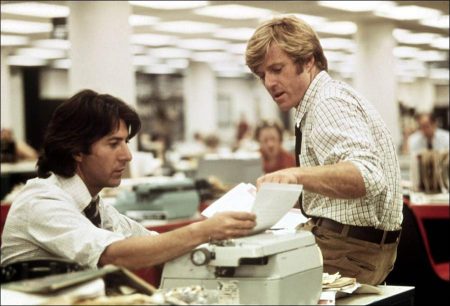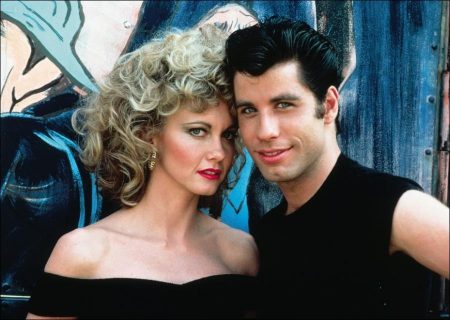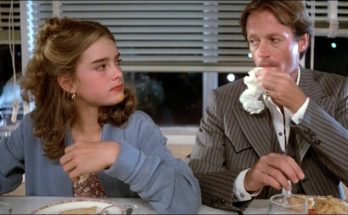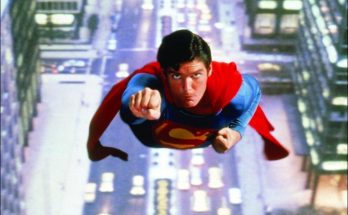
World Cinema. The 70s, which prepared the magnificent 80s, were the years when economic crises, wars and political turmoil left their mark on the cinema and more importantly, they declared the freedom of cinema. When I take a look at the Hollywood of the 70s, I see a golden era in films such as Star Wars, Jaws and Love Story, which both blockbuster and leave critics silent. But if you’re a careful observer, and a little bit interested in history, you can see the pessimism and uneasiness under this attractive exterior.
The paranoia of the ’70s, when the US suffered from serious economic troubles in the past years, bad memories of the Vietnam war, in which nearly 60,000 American soldiers died, circulated among people like ghosts, lack of confidence in politicians due to the Watergate Scandal, and mass deaths due to nuclear power plants. when it reigned. The mood in Europe was no different. The Prague Spring was another spring. It was not only the streets of Prague that were trampled under the pallets of Soviet tanks, but hopes for freedom and democracy.
It was the 70s when the sensations of these situations were reflected on the screen. Classic anti-war films such as The Deer Hunter, Apocalypse, Catch 22 and Hair were made during this period. The studios are in front of the big budget Pearl Harbor, Tora! Tora Tora! Released more conservative war films such as A Bridge Too Far. But then, in order to cover the costs of the film, they had to sell the items they used in their old films, the actors’ costumes at auction. China Syndrom, one of the most important films of those years, was perhaps only a coincidence, but it was a reflection of the paranoia in society.

One of the most relevant developments in the cinema in the 60s, the censorship mechanism that exhibits a head-breaking attitude that broke ali was no longer the provision. That’s why sex, violence and horror were used more intensely in movies of the 70s. In this democratic environment, filmmakers were able to express themselves more easily. They were able to set their political stance and imply that sexual choices should be respected.
Even a film, such as The Graduate, about a young student’s mother being with a woman of the age, provoked a reaction, while the Rocky Horror Picture Show, which transsexuals watched, didn’t stop making films like Pink Flamingos or Caligula. Bonnie and Clyde, The Wild Bunch, Badlands, Taxi Driver, such as action films that contain a dose of violence and philosophy to touch the public conscience came to life on the screen as a result of the same freedoms. There are also high-voltage horror films such as Last House on the Left, Texas Chain-saw Massacre and Halloween.
Another manifestation of freedom took place at the Oscar ceremony. First, George C. Scott, who won an Oscar for his role as General Patton, and then Marlon Brando, acclaimed for his role in the film Baba, rejected this bu so-called honor kendilerine. Brando went further and sent an Indian, Sacheen Küçüktüyü, to the ceremony instead. The words of Küçüktüy invited all the Americans to common sense with those in the hall.

In the cinema, he learned that one could be more frightening and brutal than Dracula, Frankenstein and even Mummy. The era of ki creature ”horror films that marked the 60s’ horror cinema, especially those of Hammer studios, was closed down and replaced with slasher or gore massacres. The biggest contributor to this genre is the European country, which is interesting: Italy was the land of directors such as Fellini and Visconti, who squeezed great films into the 70s.
In fact, movies were made in the 70s to remind cinema lovers to enjoy their freedoms, in fact they are not so free in their inner worlds. First, Satan, and then Omen introduced the horrors of Satan. With the help of religious fears that have been softly engraved since childhood, moviegoers first met the “screen horror“. This acquaintance was further reinforced by two modern classics, Jaws and Creature.
A quick glance at the other memorable parts of the ’70s cinema: teenage films such as American Graffiti, Grease, Saturday Night Fever; science fiction films, such as Star Wars and the Close Encounters of the Third Kind, which brought down all box-office records; The films of Godfather, adapted from Mario Puzo’s novel and making the mafia one of the important subjects of cinema; boxing films such as Rocky, Raging Bull and Champion, and disaster films about different disasters such as Escape from Poseidon, Airport 80, Earthquake, The Towering Inferno.
Robert Redford and Dustin Hoffman co-star in the All the President’s Men. During these years, Hoffman acted in eleven films, including Little Big Man, Kramer vs. Kramer, Marathon Man, and The Butterfly (Papillon). Redford proved his talent in 10 films, including The Sting, The Great Gatsby, Three Days of Condor, Candidate, and The Way We Were, starring Paul Newman.
Among them we can add Robert De Niro with his performances in 14 films, Mean Streets, Hunter, Taxi Driver, Father 2 and Furious Bull. And Dad, Serpico, Al Pacino, who made unforgettable compositions with Dog Day Afternoon. We should include Clint Eastwood, a man like Dirty Harry, or Jane Fonda and Barbra Streisand, one of the most sought-after actresses in those years, or film history won’t forgive us. Martin Scorsese, Francis Ford Coppola, Milos Forman who created events with Cuckoo Bird, Steven Spielberg, Brian De Palma, and Oscar-winning Woody Allen and George Lucas.
Top 20 movies of the 1970sStar Wars (Directed by George Lucas)
2. Love Story (Directed by: Arthur Hiller)
3. All the President’s Men (Directed by: Alan J. Pakula)
4. One Flew Over Cuckoo’s Nest (Directed by: Milos Forman)
5. Jaws (Directed by: Steven Spielberg)
6. Apocalypse Now (Directed by: Francis Ford Coppola)
7. The Godfather and The Godfather 2 (Directed by: Francis Ford Coppola)
8. Grease (Directed by: Randal Kleiser)
9. The Rocky Horror Picture Show (Directed by: Jim Sharman)
10. Alien (Directed by: Ridley Scott)
11. The Exorcist (Directed by: William Friedkin)
12. Annie Hall (Directed by: Woody Allen)
13. Taxi Driver (Directed by: Martin Scorsese)
14. A Clockwork Orange (Directed by: Stanley Kubrick)
15. Badlands (Directed by: Terrence Mallick)
16. Raging Bull (Directed by: Martin Scorsese)
17. American Graffiti (Directed by: George Lucas)
18. The Poseidon Adventure (Directed by: Ronald Neame)
19. Rocky (Directed by: Sylvester Stallone)
20. Amarcord (Directed by: Federico Fellini)
Views: 446


